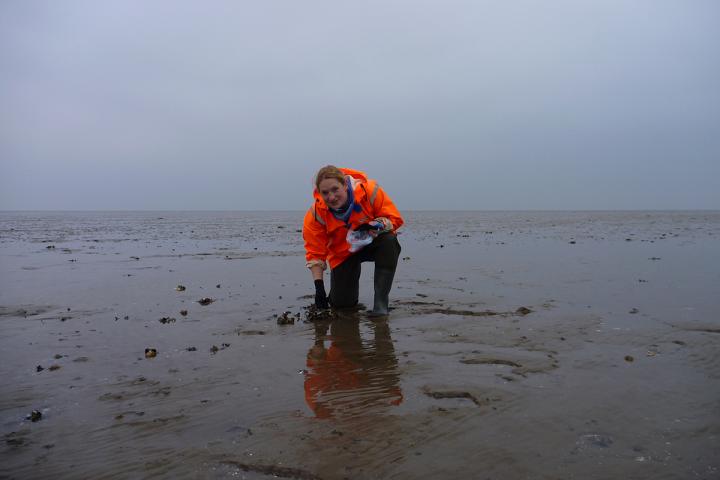
Credit: NIOZ
A variety of sea animals can take up virus particles while filtering seawater for oxygen and food. Sponges are particularly efficient. That was written by marine ecologist Jennifer Welsh from NIOZ this week, in a publication in Nature Scientific Reports. This Monday, Welsh will defend her thesis at the Free University of Amsterdam, through an online connection.
“When a virus infects a cell”, says Jennifer Welsh of the Royal Netherlands Institute for Sea Research (NIOZ), “it uses its host to make new viruses. After those are released, they can, in turn, infect many more, new cells.” However, Welsh discovered that the many virus particles in the sea – over 150 million in a glass of sea water – can also end up for, a large part, as the lunch of a diverse group of sea animals.
Filtering viruses
The Japanese oyster, for example, filters seawater to extract oxygen or food such as algae and bacteria. While doing this, it ingests virus particles. Welsh: “In our experiments, during which we did not offer the oysters any food and hence they only filtered the water for oxygen uptake, Japanese oysters removed 12 per cent of the virus particles from the water.”
That number puts the oyster in the fourth place of all species that Welsh looked at in the NIOZ Virus Ecology Lab on Texel. “Of all non-host organisms that we tested, sponges, crabs and cockles made it to the podium. In our experiments, the sponges reduced the presence of viruses by up to 94 per cent within three hours. Another experiment showed that the uptake of viruses happens indeed very quickly and effectively, even if we offered new viruses to the water every 20 minutes, the sponges remained tremendously effective in removing viruses.”
An entirely new factor in virus ecology
Until now, it was unknown that several species of sea animals can have such a significant influence on virus populations. “The influence of non-host organisms in the ambient environment, really is a factor that has been overlooked in virus ecology”, Welsh says.
However, Welsh does not assume that the results of her lab experiments will be so clear cut when applied to the natural habitat. “The situation there is much more complex, as many other animal species are present and influence one another. For example, if an oyster is filtering and a crab comes along, it closes its valve and stops filtering. In addition, there are factors such as tidal currents, temperature and UV light to consider. But also in nature, predation by non-host should definitely be taken into account.”
Useful in aquaculture
Nevertheless, the new insights might in time be useful in aquaculture. In this sector, fish or shellfish that are meant for consumption, are kept in enclosures, such as sea cages or basins, whereby there is a direct connection to the sea. Aquaculture is becoming larger as a sustainable alternative to fishing at sea, but is much criticised, mostly by nature conservationists.
Welsh explains why: “In salt water farms, tremendous amounts of specimens of one single species live together in monoculture. If a contagious disease breaks out, the risks are high that the pathogen spreads to the wild populations living in the sea. With the addition of enough sponges, the danger of a virus outbreak would possibly be nipped in the bud. The results of this research show that this would be good follow up research project.”
Online defence
On Monday 30 March, Jennifer Welsh will be the first NIOZ-researcher to defend her dissertation through the internet. “I will be defending my degree in the middle of a crisis caused by COVID-19, a corona virus that, by now, we all know and have been affected by. Due to the imposed restrictions, I will answer the questions of the committee online. Just my boyfriend, who happens to be one of my paranymfs, will be there with me. My apartment is very small, so I may end up defending my thesis on my bed with my laptop.”
###
Publication
Jennifer E. Welsh, Peter Steenhuis, Karlos Ribeiro de Moreas, Jaap van der Meer, David W. Thieltges. and Corina P.D. Brussaard
Marine virus predation by non-host organisms
Nature Scientific Reports 10, 5221 (2020)
Media Contact
Henriette de Waal
[email protected]
0031-222-369-369
Original Source
https:/
Related Journal Article
http://dx.




